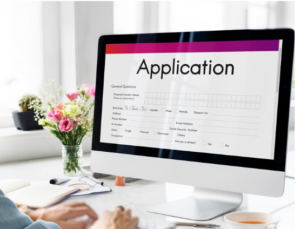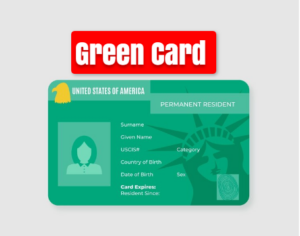P-1 Visa: A Complete Guide for Athletes, Artists, and Performers

For internationally renowned athletes, artists, and performers, the P-1 Visa offers a special chance to work temporarily in the United States. This all-inclusive guide addresses everything about the P1 Visa including the application process, P1 Visa requirements, success guidance, and the routes to a green card for athletes and performers.
What is a P-1 Visa?
For those with notable success in their fields of study, the P-1 Visa is a unique non-immigrant visa. It temporarily lets athletes, artists, and entertainers perform or work in the United States. Two main subcategories comprise the visa:
- P-1A Visa: Set exclusively for athletes with a worldwide reputation. It covers professional sports stars and athletic teams.
- P-1B Visa: For members of globally acknowledged entertainment groups such as theatre groups, musicians, and dancers.
The P-1 Visa is a great choice whether your goal is to join a U.S. tour as a band member or as an athlete looking for a sports visa USA.
Who Can Apply for a P-1 Visa?
Those who have become internationally well-known—including athletes and entertainers—are meant to apply for the P-1 Visa. You might be qualified depending on the following:
- Athletes: Must have a degree of success acknowledged in their particular sport internationally.
- Entertainment Groups: At least 75% of the group has to have spent at least one year performing together.
Under a P-1S Visa, this visa also allows support staff including trainers and coaches.
Important Requirements for the P-1 Visa
Applicants for the P1 Visa USA must satisfy the following P1 Visa requirements:
- Evidence of Prominence: Proof of an excellent degree of skill or accomplishment in sports or entertainment.
- Contractual Obligations: Documentation proving scheduled performances or activities.
Usually valid for the length of the event, competition, or season, this visa allows for a possibility for extension depending on activity length.
For people internationally acknowledged in their specialties, the P1 visa requirements are tough but acceptable.
A Comprehensive Guide to P-1 Visa Applications

-
Step 1: File Form I-129
Completing Form I-129 marks the first phase of the P1 Visa application. This form must be submitted to USCIS by the U.S. company or sponsoring agent. Important notes include:
- Employer Sponsorship: A U.S.-based sponsor is needed to petition for the P1 Visa.
- Supporting Documents: Include P1 Visa requirements showing international recognition and event contracts.
- Fees: Pay the required processing costs or decide on premium processing for quick review.
-
Step 2: Collect Essential Documents
As you seek a P1 Visa for the USA, compile the following:
- Evidence of International Recognition: This can include official rankings, media coverage, or awards.
- Contracts and Schedules: Documentation of scheduled sporting events or performances.
- Recommendation Letters: Letters from professionals confirming your field of expertise are prominent.
-
Step 3: File Form I-129 with USCIS
Along with supporting paperwork and payments, the U.S. company files Form I-129. Premium processing is available for a further cost for customers seeking quicker results.
-
Step 4: Attend a Visa Interview
Once USCIS accepts Form I-129, set an interview at your nearest U.S. consulate or embassy. Getting ready:
- Documenting: Bring all original documentation, including the Form I-129 approval notification.
- Clear Intentions: Get ready to explain your role, goals, and work plans in the United States.
- Tips for Visa Interviews: Present yourself powerfully by openly talking about your successes.
The Benefits of the P-1 Visa for International Talent

For foreign athletes, artists, and performers, the P-1 Visa is a very good option because of its flexible terms and wide eligibility requirements. The P1 Visa could be the perfect fit for this reason as follows:
- Specialized Visa Type: Unlike regular work visas, the P-1 Visa is specifically designed for those in creative and competitive fields. Whether your ability is artistic, musical, or athletic, the P Visa emphasizes your particular talent.
- Renewability: The P1 Visa has flexible terms. For U.S. prolonged events or sports seasons, extensions can be given depending on event schedules or continuing activities.
- Family Eligibility: Under the P-4 category, family members can accompany P1 Visa holders, allowing wives and children to live and study in the United States.
For internationally recognized artists looking for temporary work in the United States who might also aspire to move to permanent residency, the P1 Visa USA stands out as an extraordinary option.
Navigating the Transition from P-1 Visa to Green Card

Although the P-1 Visa is meant for temporary employment, many athletes and performers want to remain longer and change from a P Visa to a Green Card. The method is quickly summarized here:
- Identify the Right Green Card Category: The EB-1 Green Card is usually the best choice available to P-1 Visa holders, because of its connection with exceptional talents in sports and the arts.
- Examine EB-1 Eligibility Criteria: An EB-1 visa requires evidence of extraordinary talent or accomplishment acknowledged either nationally or internationally. This makes it an excellent next step for athletes and performers.
- Ask for Legal Advice: Professional legal advice is very helpful as navigating the transition requires thorough documentation and eligibility confirmation.
Transitioning from a P1 Visa to a Green Card offers an exciting chance to establish residency and start a lifetime career in the United States. Many who shine in sports and entertainment find this route helpful as they reach new milestones in their respective fields of study.
Practical Tips for a Smooth P-1 Visa Process

Getting a P-1 Visa can go quickly and with the right approach is easy. These are some last pointers to help streamline the process:
- Double-Check All Forms: Verify all forms carefully. Before submission, make sure Form I-129’s information is accurate and thoroughly examined.
- Maintain Clear Communication with the Sponsor: Maintaining regular communication helps to avoid delays as a U.S.-based agent or employer has to apply.
- Consider Premium Processing: If pressed for time, choose premium processing to get a decision in 15 calendar days.
Following these guidelines helps candidates avoid typical mistakes and raise their chances of getting a positive outcome for their P1 Visa US application.
Frequently Asked Questions
-
Q1: What expenses involve getting a P-1 visa?
Form I-129’s filing fee is the main outlay. Premium processing results in additional fees.
-
Q2: Can I transition to a green card on a P-1 visa?
Yes, one can achieve this with the EB-1 visa, which grants those with extraordinary abilities permanent residency.
-
Q3: Can I work for multiple employers on a P-1 visa?
Yes, but every company has to file an individual Form I-129 petition.
Ready to Start Your P-1 Visa Application?
Applying for a P1 visa is an exciting step for athletes, artists, and performers wishing to bring their skills to the United States. Our area of expertise at Passage Immigration Law is guiding clients through the U.S. immigration procedure confidently and helping them meet all P1 visa requirements.
To begin your path right now, consult Passage Immigration Law. With our knowledge of P1 Visa USA applications and personalized advice, we can assist you in realizing your American career goals.
